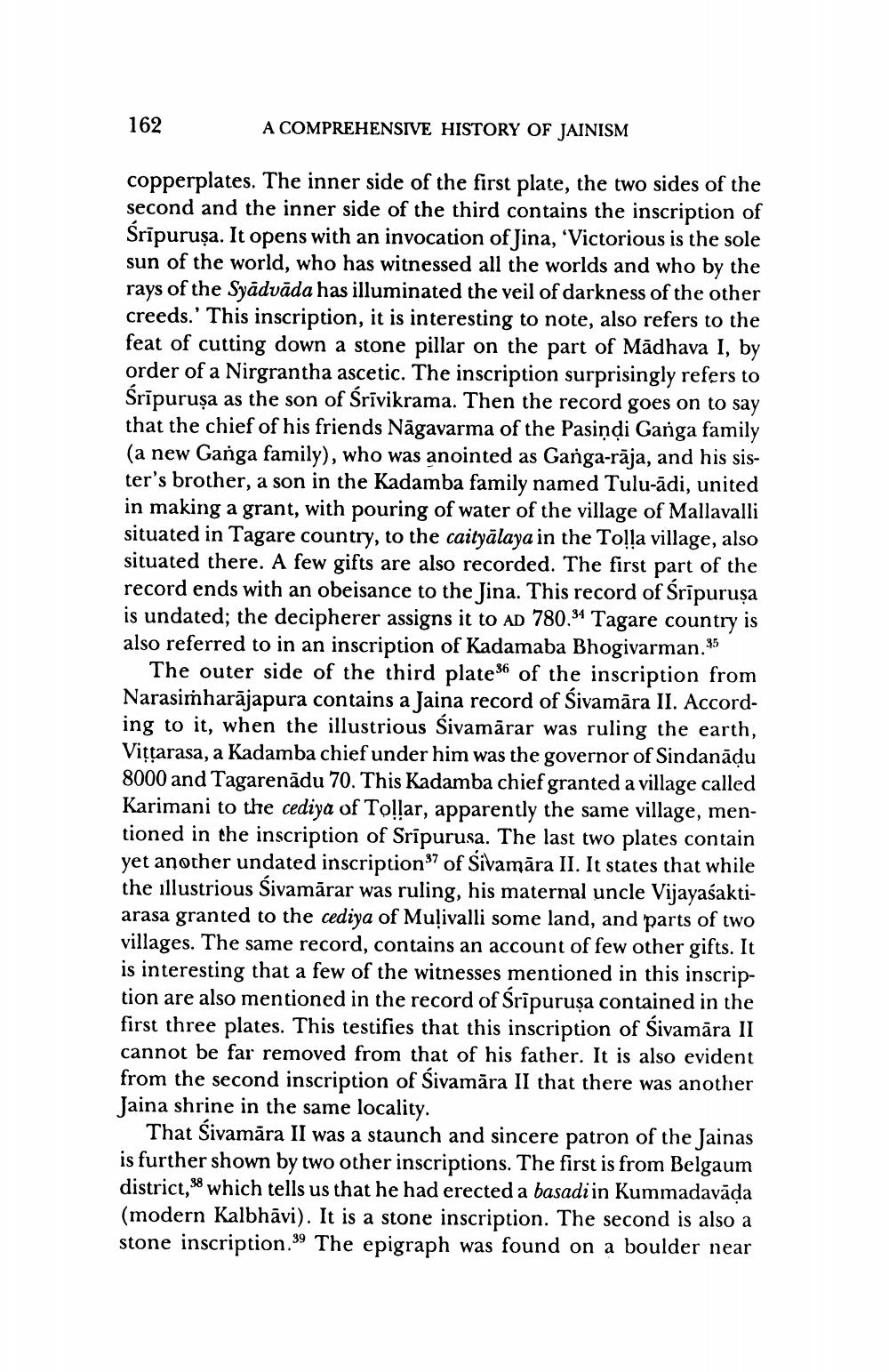________________
162
A COMPREHENSIVE HISTORY OF JAINISM
copperplates. The inner side of the first plate, the two sides of the second and the inner side of the third contains the inscription of Śrīpurușa. It opens with an invocation of Jina, 'Victorious is the sole sun of the world, who has witnessed all the worlds and who by the rays of the Syādvāda has illuminated the veil of darkness of the other creeds.' This inscription, it is interesting to note, also refers to the feat of cutting down a stone pillar on the part of Madhava I, by order of a Nirgrantha ascetic. The inscription surprisingly refers to Śrīpuruşa as the son of Śrivikrama. Then the record goes on to say that the chief of his friends Nagavarma of the Pasindi Ganga family (a new Ganga family), who was anointed as Ganga-raja, and his sister's brother, a son in the Kadamba family named Tulu-ādi, united in making a grant, with pouring of water of the village of Mallavalli situated in Tagare country, to the caityalaya in the Tolla village, also situated there. A few gifts are also recorded. The first part of the record ends with an obeisance to the Jina. This record of Śrīpuruşa is undated; the decipherer assigns it to AD 780.34 Tagare country is also referred to in an inscription of Kadamaba Bhogivarman.$5
The outer side of the third plate36 of the inscription from Narasimharajapura contains a Jaina record of Śivamāra II. According to it, when the illustrious Śivamarar was ruling the earth, Viṭṭarasa, a Kadamba chief under him was the governor of Sindanāḍu 8000 and Tagarenādu 70. This Kadamba chief granted a village called Karimani to the cediya of Tollar, apparently the same village, mentioned in the inscription of Sripurusa. The last two plates contain yet another undated inscription" of Sivamāra II. It states that while the illustrious Śivamarar was ruling, his maternal uncle Vijayaśaktiarasa granted to the cediya of Mulivalli some land, and parts of two villages. The same record, contains an account of few other gifts. It is interesting that a few of the witnesses mentioned in this inscription are also mentioned in the record of Śrīpurușa contained in the first three plates. This testifies that this inscription of Śivamāra II
cannot be far removed from that of his father. It is also evident
from the second inscription of Śivamāra II that there was another Jaina shrine in the same locality.
That Śivamāra II was a staunch and sincere patron of the Jainas is further shown by two other inscriptions. The first is from Belgaum district,38 which tells us that he had erected a basadi in Kummadavāḍa (modern Kalbhāvi). It is a stone inscription. The second is also a stone inscription.39 The epigraph was found on a boulder near




